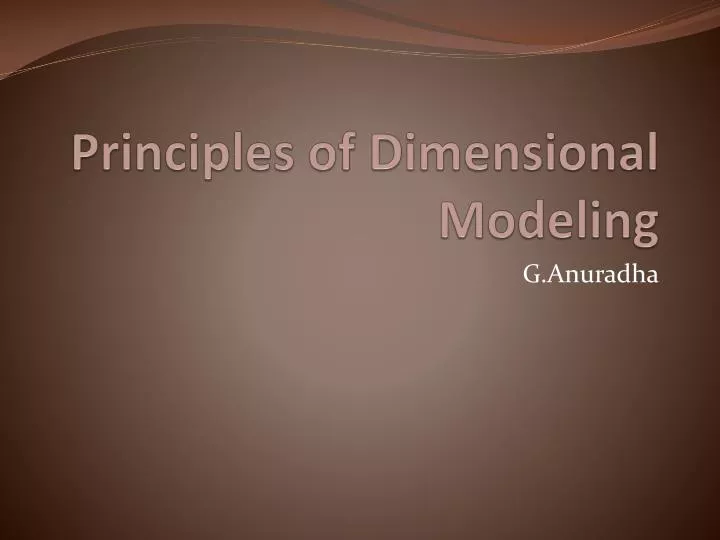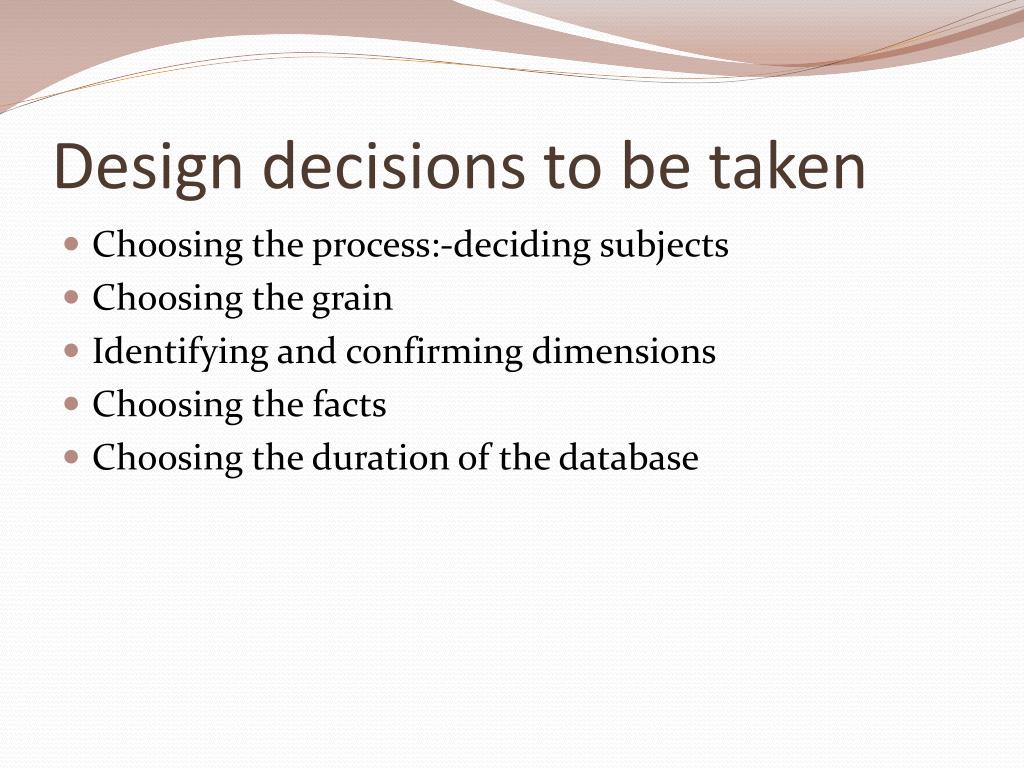
Benefits of Dimensional Modeling
· Following are the rules and principles of Dimensional Modeling: Load atomic data into dimensional structures. Build dimensional models around business processes. Need to ensure that every fact table has an associated date dimension table. Ensure that all facts in a single fact table are at the same grain or level of detail · This chapter contains sections titled: Chapter Objectives From Requirements to Data Design The Star Schema Star Schema Keys Advantages of the Star Schema Star Schema: Examples Chapter S · Tips for combining data into dimensional model • Provide best data access • Model should be query-centric • Model should be optimized for queries and analyses • Model should reveal the interactions between the dimension and fact tables • There should be drilling down or rolling up along dimension hierarchies STAR SCHEMA for automaker salesEstimated Reading Time: 9 mins

Principles of Dimensional Modeling
Dimensional Modeling is a favorite modeling technique in data warehousing. DM is a logical design technique that seeks to present the data in a standard, intuitive framework that allows for high-performance access. It is inherently dimensional, and it adheres to a discipline that uses the relational model with some important restrictions · Following are the rules and principles of Dimensional Modeling: Load atomic data into dimensional structures. Build dimensional models around business processes. Need to ensure that every fact table has an associated date dimension table. Ensure that all facts in a single fact table are at the same grain or level of detail Slowly Changing Dimension Techniques. Type 0: Retain original; Type 1: Overwrite; Type 2: Add new row; Type 3: Add new attribute; Type 4: Add mini-dimension; Type 5: Add mini-dimension and Type 1 outrigger; Type 6: Add Type 1 attributes to Type 2 dimension; Type 7: Dual Type 1 and Type 2 dimensions; Dimension Hierarchy Techniques. Fixed depth positional hierarchies

Navigation menu
· Following are the rules and principles of Dimensional Modeling: Load atomic data into dimensional structures. Build dimensional models around business processes. Need to ensure that every fact table has an associated date dimension table. Ensure that all facts in a single fact table are at the same grain or level of detail · Dimensional Data Modelling is one of the data modelling techniques used in data warehouse design. Goal: Improve the data retrieval. The concept of Dimensional Modelling was developed by Ralph Kimball which is comprised of facts and dimension tables Slowly Changing Dimension Techniques. Type 0: Retain original; Type 1: Overwrite; Type 2: Add new row; Type 3: Add new attribute; Type 4: Add mini-dimension; Type 5: Add mini-dimension and Type 1 outrigger; Type 6: Add Type 1 attributes to Type 2 dimension; Type 7: Dual Type 1 and Type 2 dimensions; Dimension Hierarchy Techniques. Fixed depth positional hierarchies

Table of Contents
· Tips for combining data into dimensional model • Provide best data access • Model should be query-centric • Model should be optimized for queries and analyses • Model should reveal the interactions between the dimension and fact tables • There should be drilling down or rolling up along dimension hierarchies STAR SCHEMA for automaker salesEstimated Reading Time: 9 mins Dimensional modeling is part of the Business Dimensional Lifecycle methodology developed by Ralph Kimball which includes a set of methods, techniques and concepts for use in data warehouse design.: – The approach focuses on identifying the key business processes within a business and modelling and implementing these first before adding additional Slowly Changing Dimension Techniques. Type 0: Retain original; Type 1: Overwrite; Type 2: Add new row; Type 3: Add new attribute; Type 4: Add mini-dimension; Type 5: Add mini-dimension and Type 1 outrigger; Type 6: Add Type 1 attributes to Type 2 dimension; Type 7: Dual Type 1 and Type 2 dimensions; Dimension Hierarchy Techniques. Fixed depth positional hierarchies

Get professional help and free up your time for more important courses
· Following are the rules and principles of Dimensional Modeling: Load atomic data into dimensional structures. Build dimensional models around business processes. Need to ensure that every fact table has an associated date dimension table. Ensure that all facts in a single fact table are at the same grain or level of detail · Dimensional Data Modelling is one of the data modelling techniques used in data warehouse design. Goal: Improve the data retrieval. The concept of Dimensional Modelling was developed by Ralph Kimball which is comprised of facts and dimension tables Slowly Changing Dimension Techniques. Type 0: Retain original; Type 1: Overwrite; Type 2: Add new row; Type 3: Add new attribute; Type 4: Add mini-dimension; Type 5: Add mini-dimension and Type 1 outrigger; Type 6: Add Type 1 attributes to Type 2 dimension; Type 7: Dual Type 1 and Type 2 dimensions; Dimension Hierarchy Techniques. Fixed depth positional hierarchies
No comments:
Post a Comment